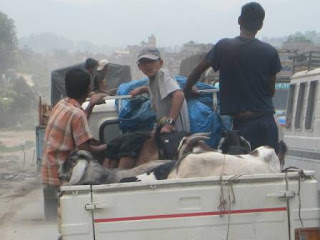I have arrived in the US for home leave and will be here until mid-February. Have had a few re-entry issues this past week since arrival (AM/PM swap-jetlag, bronchitis and gastro resettlement), but things are getting better now. It is such a wonderful gift to be able to visit with people personally, look them in the eye, hear their voices and talk with them (and, of course, hold their babies). I can now exploit the high speed internet available in this country to post videos and pics from the last year!
This first installment is a clip from a leprosy research conference dinner held in Fukuoka, Japan in July. We were in a small boat when a couple of street singers happened to come by. I did not recognize the song until the chorus.

















































